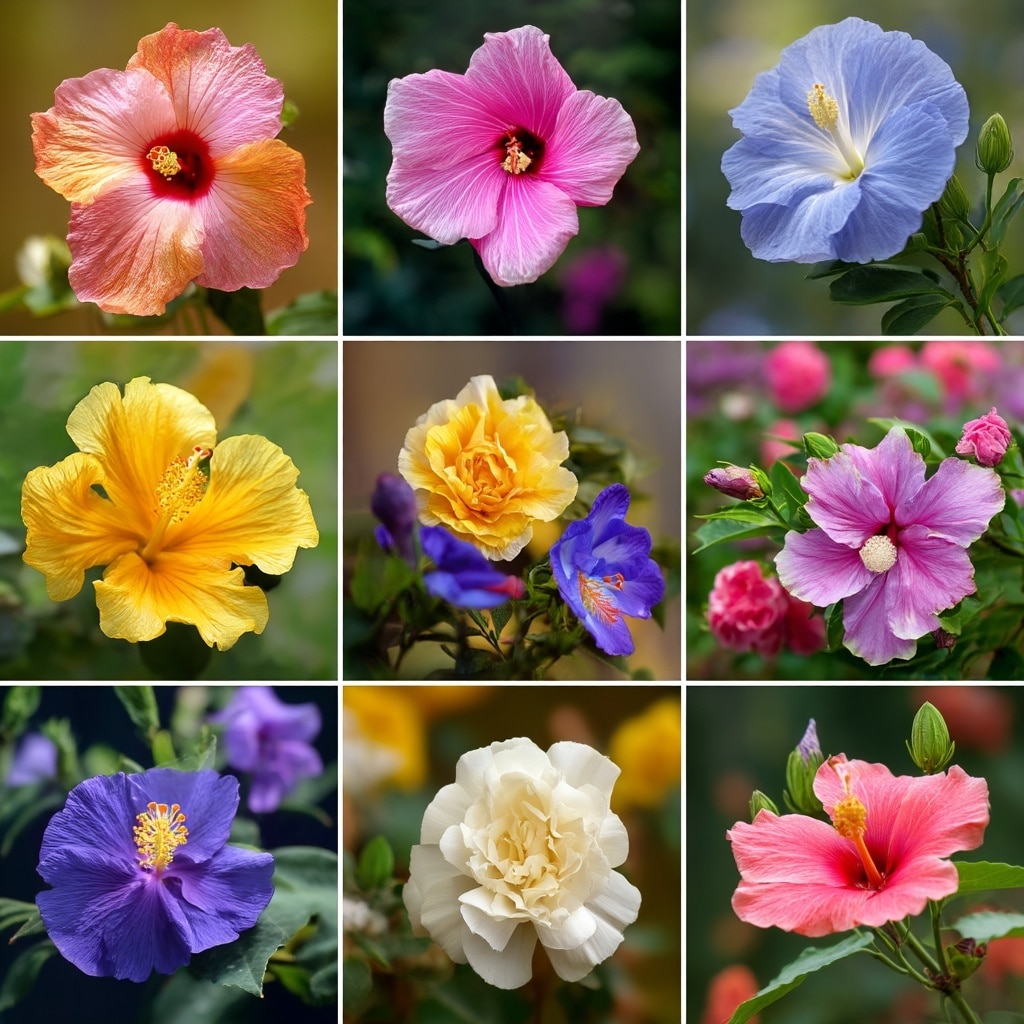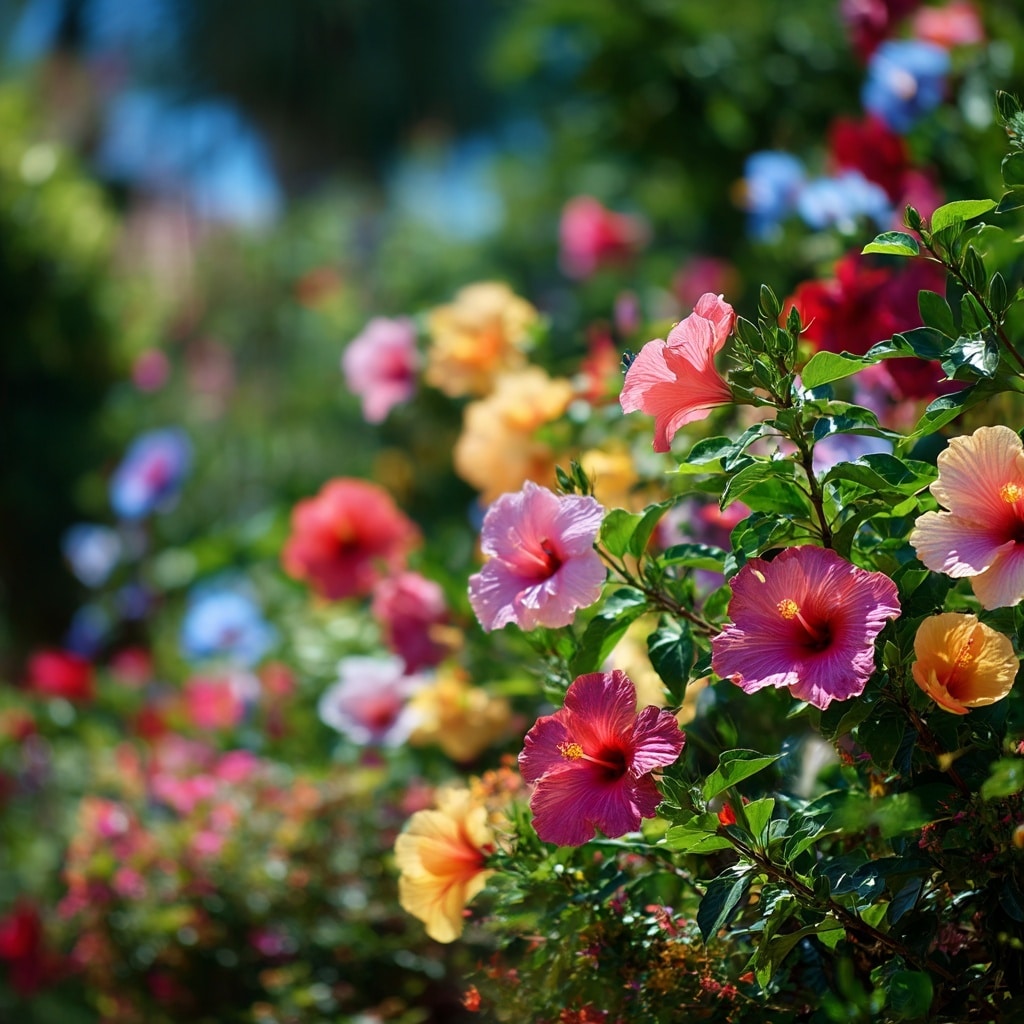If you’re dreaming of adding bold color and tropical flair to your garden, flowers hibiscus are one of the most rewarding choices you can make. With their massive, vivid blooms and easy-care nature, hibiscus plants bring instant visual appeal to any outdoor space. Whether you’re planting in the ground or starting a container garden, these flowering shrubs can thrive with just a bit of guidance. Understanding the different types of hibiscus and how to properly grow and care for them ensures your plants will bloom beautifully all season long. In this guide, we’ll walk you through everything you need to know before planting hibiscus—from choosing the right variety to keeping it thriving year after year.
Table of Contents
How to Use Hibiscus Flowers in the Garden
Design ideas, placement tips, and why pollinators love them
Flowers hibiscus come in an incredible range of colors, making them one of the most versatile plants for garden design. Whether you want a dramatic focal point or a cheerful border, these flowering shrubs adapt beautifully to nearly any landscape layout.
Most hibiscus varieties grow in a bushy form, which makes them perfect for lining fences, framing walkways, or creating privacy hedges. With regular pruning, you can even train them into elegant tree-like shapes that add vertical interest to your yard. If you’re working with smaller spaces, consider planting flowers hibiscus in large pots—this gives you more control over placement and allows you to bring them indoors during colder months.
Hibiscus plants aren’t just pretty—they’re also functional. Their bright, nectar-rich blooms attract essential pollinators like bees, butterflies, and hummingbirds. Positioning your hibiscus near vegetable beds or fruit trees can actually support a healthier garden ecosystem.
Want to add curb appeal? Try flanking your front entryway with tall hibiscus varieties in colorful containers. Prefer a more natural look? Mix different hues along a garden border to create a soft, tropical rainbow effect.
How to Grow Hibiscus Flowers
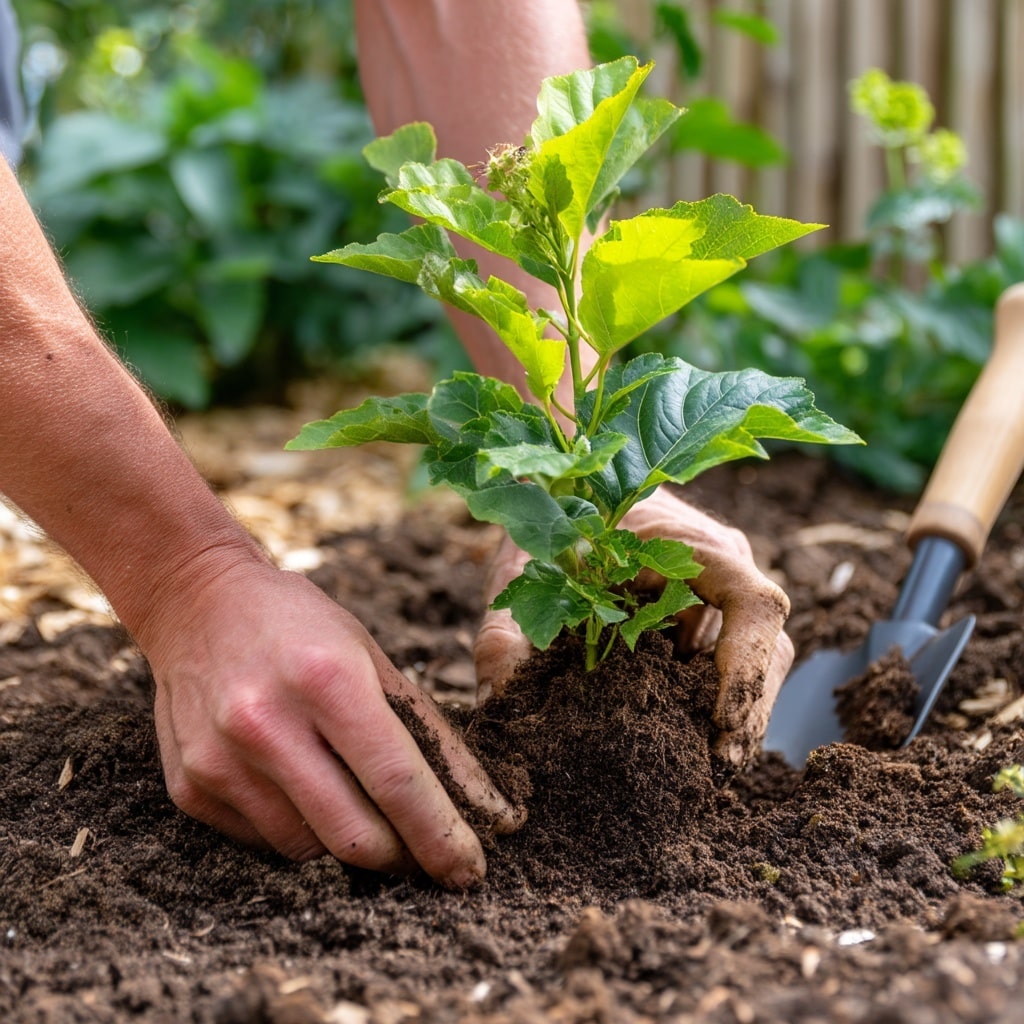
Soil, sun, spacing, and setup for success
Growing flowers hibiscus is simpler than many think—especially when you start with the right foundation. These plants thrive in full sun and well-draining soil with a slightly acidic pH (around 6.0–6.5). Before planting, select a spot in your yard that receives at least six hours of direct sunlight daily and is protected from strong winds.
If you’re using nursery-grown hibiscus, dig holes slightly wider than the plant’s root ball, leaving 2 to 3 feet of space between plants to allow for mature growth. For seed growers, start them indoors about 12 weeks before your last frost date. While you can sow them outdoors, indoor starts offer better success and earlier blooms.
After placing your hibiscus in the ground, backfill with nutrient-rich soil and top it with mulch to help retain moisture and regulate temperature. Water deeply after planting and continue watering regularly, especially during the early growth phase. The goal is to keep the soil consistently moist but not soggy.
Container growers can use large pots with drainage holes and a mix designed for acid-loving plants. Place containers in sunny spots, rotate regularly for even growth, and ensure pots never sit in standing water.
How to Care for Hibiscus Flowers
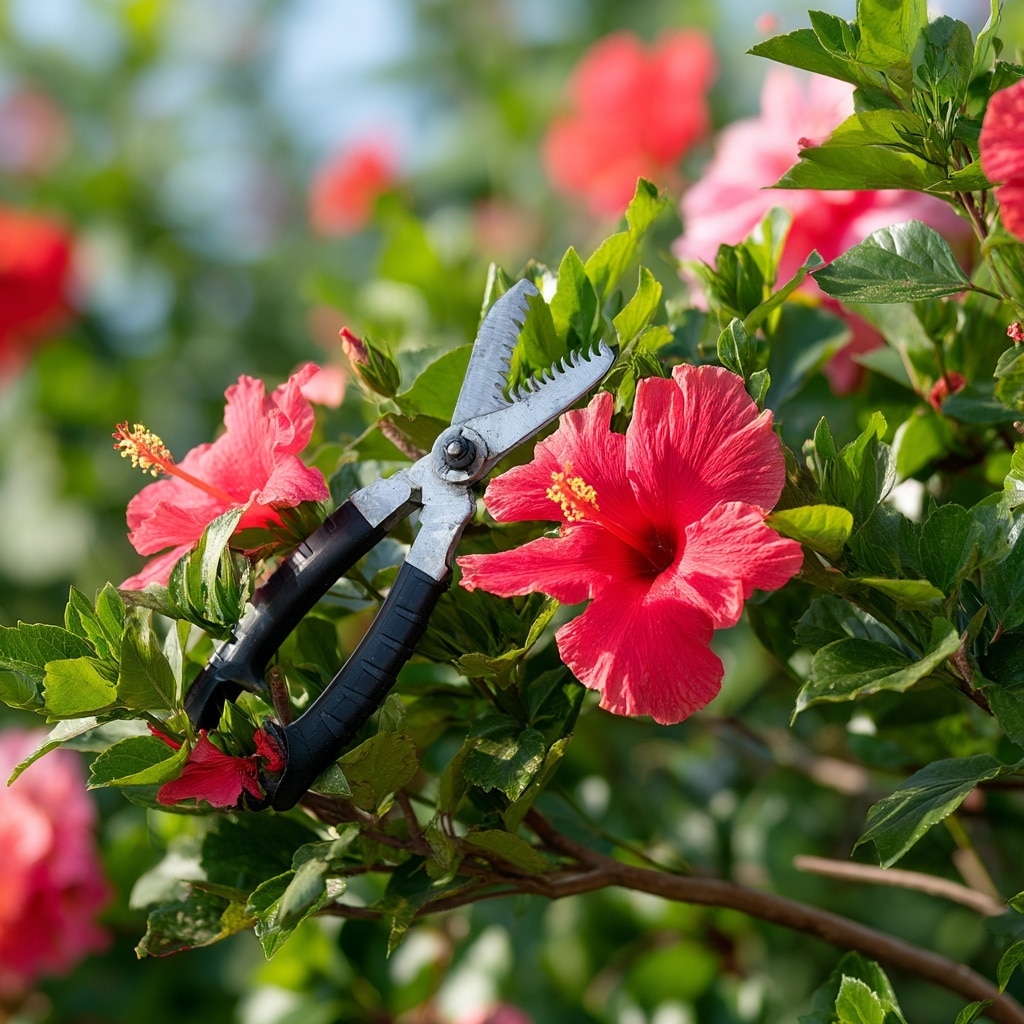
Temperature, pruning, feeding, and year-round maintenance
Once established, flowers hibiscus are fairly low-maintenance, but consistent care is key to prolonged blooming and plant health. The most important factor? Temperature. Hibiscus prefer warm weather and will perform best in conditions between 65°F and 80°F. If exposed to sudden cold snaps, their buds may drop before flowering, so be sure to protect them from chill and frost.
Regular pruning is another essential step. Once your plant reaches maturity and finishes blooming—typically in late fall or winter—trim back any dead, damaged, or overcrowded stems. This not only encourages fuller growth but also reduces the risk of disease. Use clean shears and cut at a 45-degree angle above a node to stimulate new shoots.
Feeding your hibiscus helps it reach its flowering potential. Choose a balanced fertilizer rich in potassium and nitrogen, and apply a diluted solution every two weeks during the growing season. Organic options like seaweed extract or fish emulsion offer additional benefits and are gentle on the roots.
Avoid overwatering, especially in cooler months. Let the top inch of soil dry out slightly between watering sessions, and always ensure good drainage to prevent root rot.
Popular Hibiscus Flower Varieties

Choosing between tropical, hardy, and perennial types
There are over 200 species of flowers hibiscus, but most home gardeners work with a few standout varieties. Understanding the difference between tropical, perennial, and hardy hibiscus helps you choose the right type for your climate and landscape goals.
🌴 Tropical Hibiscus
These are the showiest varieties, known for their glossy leaves and bold, exotic blooms. However, tropical hibiscus can’t tolerate frost and must be overwintered indoors in colder zones. Common types include:
- Hibiscus rosa-sinensis (Hawaiian Hibiscus): Bright yellow or red flowers that bloom spring through summer.
- Hibiscus trionum (“Flower of an Hour”): Small, short-lived blooms with creamy petals and dark centers.
🌸 Perennial Hibiscus
Perennial hibiscus varieties die back in winter and return each spring. They tend to have larger blooms than tropical types and are perfect for garden beds in temperate regions.
- Hibiscus ‘Giant Rose Mallow’: Massive pink-and-white blooms that last well into fall.
- Hibiscus moscheutos: Also known as swamp hibiscus, it thrives in moist soil and blooms late summer.
❄️ Hardy Hibiscus
These cold-tolerant plants survive harsh winters and are ideal for gardeners in USDA zones 4–9. They require little protection and bounce back reliably each year.
- Hibiscus syriacus ‘Blue Bird’: Produces stunning blue-purple flowers on upright shrubs.
Some varieties, like Hibiscus sabdariffa (Roselle), are even edible—used in teas, syrups, and culinary dishes.
Are Hibiscus Flowers Toxic?

Pet safety and precautions for your garden
While flowers hibiscus are a delight for gardeners, some varieties can pose risks to pets. The most commonly cited example is Hibiscus syriacus (also known as Rose of Sharon), which may cause mild to moderate reactions in dogs and cats if ingested.
Symptoms can include vomiting, diarrhea, drooling, or stomach discomfort—especially when pets consume large amounts of the plant’s stems, leaves, or blossoms. According to veterinarians, while not all hibiscus species are toxic, it’s often hard to tell which ones are safe, so it’s best to keep all varieties out of reach of curious pets.
If you suspect your dog or cat has eaten part of a hibiscus plant and they begin showing symptoms, contact your local vet or an animal poison control hotline immediately. Quick hydration and professional care are key if larger quantities were consumed.
To prevent accidental poisoning, plant flowers hibiscus in raised beds, fenced-off areas, or containers placed well out of reach of pets. Indoors, consider placing potted hibiscus on high shelves or hanging baskets.
How to Repot Hibiscus Flowers
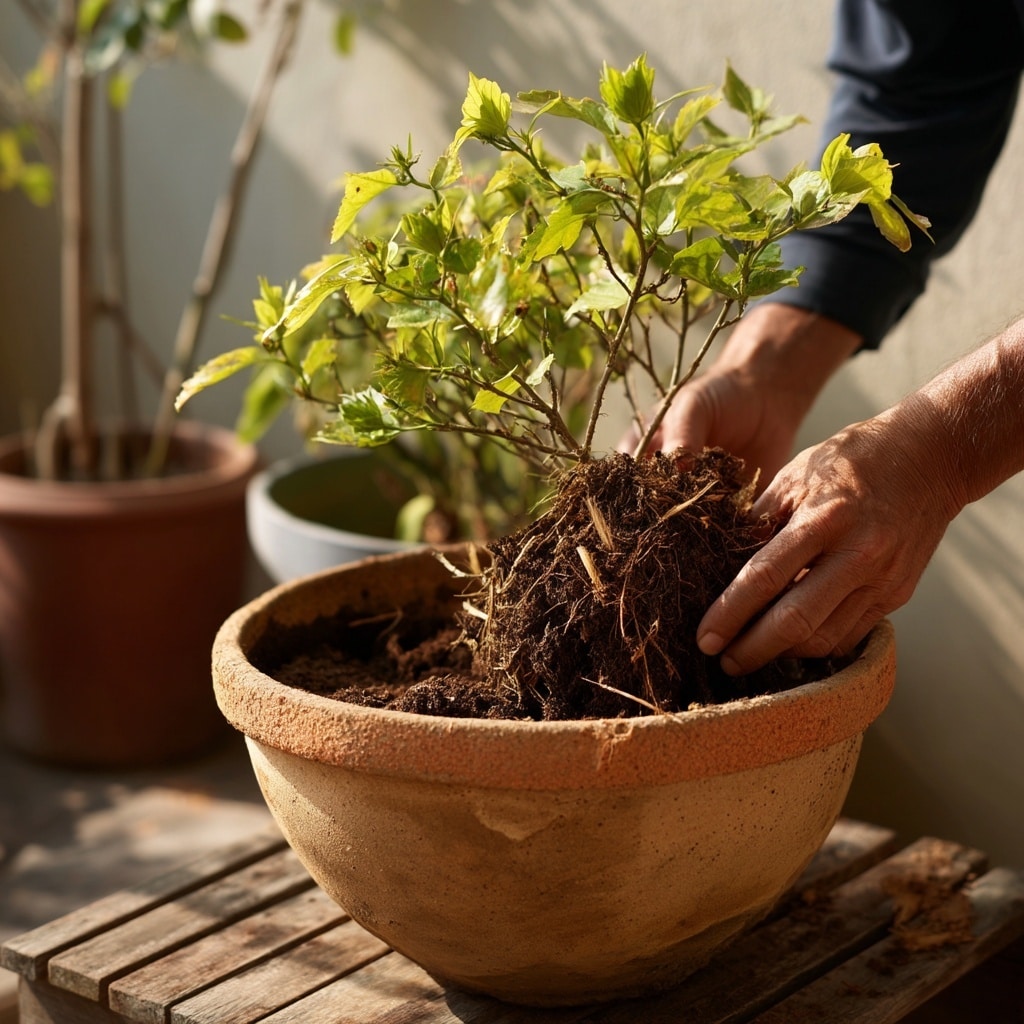
When and how to refresh containers for healthier growth
If you’re growing flowers hibiscus in pots, repotting becomes essential every few years. Over time, the plant’s roots can outgrow their container, causing poor drainage, stunted growth, and fewer blooms. You’ll know it’s time to repot when roots start peeking through the drainage holes or the soil dries out unusually fast.
Here’s how to do it:
✔️ What You’ll Need:
- A larger pot (2–4 inches wider than the current one)
- Well-draining, nutrient-rich potting mix
- Pruning shears
- Mulch for moisture retention
🛠️ Step-by-Step Repotting:
- Prepare the new pot by adding 2 inches of fresh soil and lightly watering it.
- Gently remove the plant from its current container. Shake off excess soil without damaging the roots.
- Loosen the root ball. If roots are tightly bound, carefully detangle or trim them using clean pruning shears.
- Trim about one-third of the root system to encourage fresh growth.
- Place the plant in the new pot so the root ball sits 2 to 4 inches below the rim.
- Fill in with potting mix, press lightly, and water until moist (not soggy).
- Top with mulch to lock in moisture and protect the roots.
Keep your newly repotted flowers hibiscus in a sunny spot and reduce watering for the first week as the roots adjust. Repotting not only refreshes the plant’s growing space but can lead to fuller blooms and a healthier overall appearance.
Final Thoughts on Growing Flowers Hibiscus
Bright blooms, healthy roots, and year-round beauty
Whether you’re just starting your garden or looking to add vibrant color to your outdoor space, flowers hibiscus are a beautiful and rewarding choice. With their wide variety of types, easy-to-follow care routines, and bold blossoms, these plants can elevate everything from front yard borders to patio containers.
By selecting the right variety for your climate, planting in well-draining soil, and maintaining a consistent care routine, your hibiscus will reward you with season after season of stunning blooms. Just remember to keep pets away from potentially toxic varieties and refresh potted plants with timely repotting.
Now that you know how to grow and care for flowers hibiscus, it’s time to pick your favorite type and bring some tropical charm to your garden!

